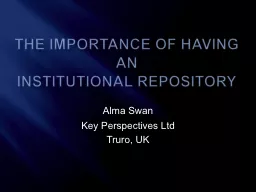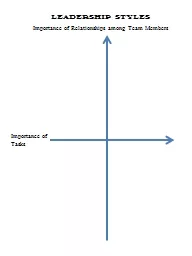PPT-The importance of having an
Author : yoshiko-marsland | Published Date : 2015-09-20
institutional repository Alma Swan Key Perspectives Ltd Truro UK Daniel Coit Gilman First President Johns Hopkins University Key Perspectives Ltd University of
Presentation Embed Code
Download Presentation
Download Presentation The PPT/PDF document "The importance of having an" is the property of its rightful owner. Permission is granted to download and print the materials on this website for personal, non-commercial use only, and to display it on your personal computer provided you do not modify the materials and that you retain all copyright notices contained in the materials. By downloading content from our website, you accept the terms of this agreement.
The importance of having an: Transcript
Download Rules Of Document
"The importance of having an"The content belongs to its owner. You may download and print it for personal use, without modification, and keep all copyright notices. By downloading, you agree to these terms.
Related Documents














